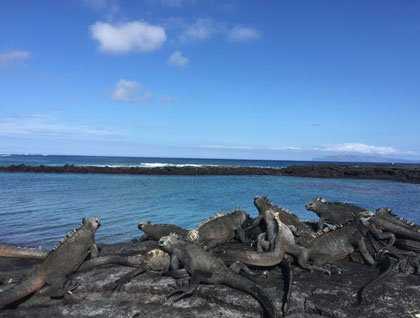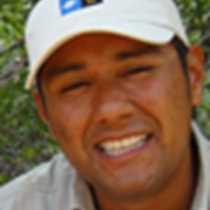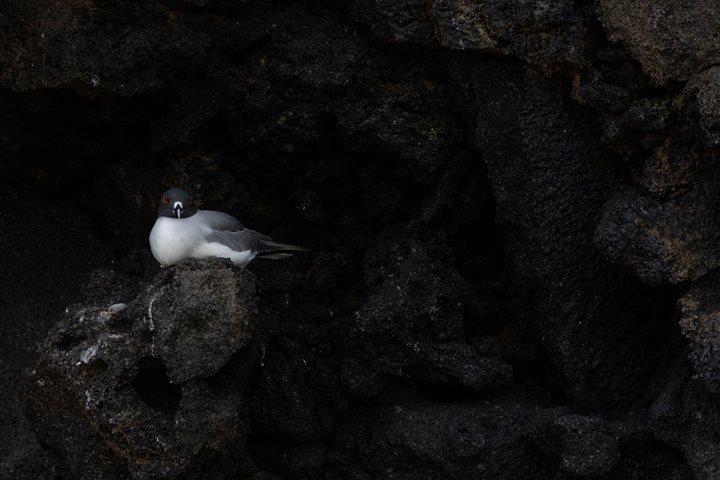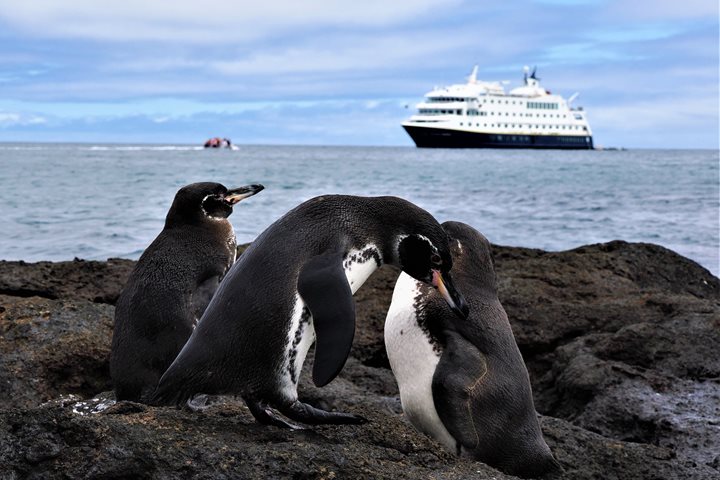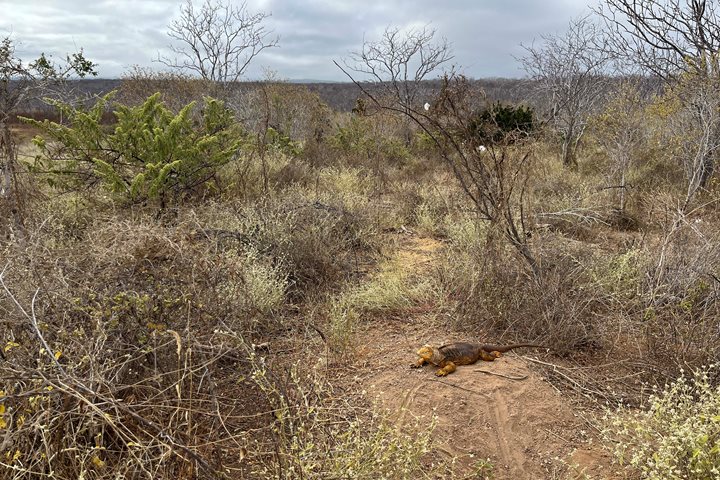The developing ecology of the island of Fernandina is well appreciated by scientists studying the ecosystem, especially with the added complications created during the El Niño phenomenon. The last time that this occurred was in 1997, and its effect lasted almost until 2001. During these periods, animal populations that rely on ocean food supplies may decline because of the lack of nutrients. Other land-based ecosystems will flourish instead, with the arrival of the prevailing rains that will last for a longer period of time.
We offered some excellent activities today, starting with a long hike in Punta Espinosa, where we managed to explore the colonies of marine iguanas and flightless cormorants. Along the shoreline, some sea turtles, penguins and Sally Lightfoot crabs were spotted. We were very fortunate to observe an intense fight between two giant marine iguanas, trying to dominate the colony territory. It was a remarkable sighting.
We also had the unusual opportunity to visit a lava flow extension, which our young explorers especially enjoyed. We took a quick break to sip some water and to discuss the extraordinary story of Roy Sudbury, a pilot from World War II who tried to establish a colony in Fernandina Island and failed. He did eventually manage to achieve his goal in Essex point, which is located in Isabella Island.
Our day was far from finished. After we returned to our ship, the National Geographic Endeavour moved across Bolivar Canal towards Punta Vicente Roca. On the way, Cindy’s keen eyes spotted a sperm whale and some common dolphins, who escorted us for a short time, and as soon we arrived to our next destination, our guests were ready to snorkel. The crystal clear blue waters and gorgeous landscape delighted us as we explored the ocean, observing sea turtles, penguins, fur seals. There was a curious flightless cormorant that approached us as well, trying to figure out if we were edible or not!
It was an excellent day of exploration, full of close encounters with wildlife.

